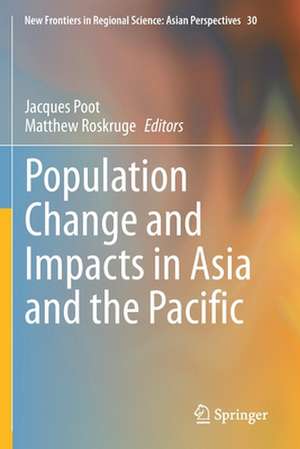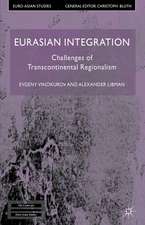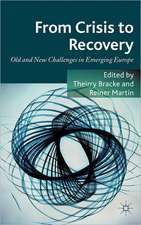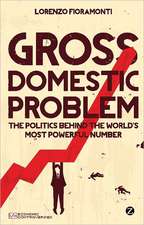Population Change and Impacts in Asia and the Pacific: New Frontiers in Regional Science: Asian Perspectives, cartea 30
Editat de Jacques Poot, Matthew Roskrugeen Limba Engleză Paperback – apr 2021
This volume brings together a range of contributions that provide contemporary regional science perspectives on population change and its socio-economic consequences in the Asia-Pacific region. This region accounts for close to two-thirds of the world’s population and is highly diverse in terms of key demographic indicators such as population size, growth, composition and distribution. The authors provide quantitative assessments, either descriptively or by means of modelling, of important demographic issues affecting this part of the world.
The topics addressed include: broad demographic trends across the Asia-Pacific region and its sub-regions; assessment of population decline, urbanization and spatial distribution using cases from China, Colombia, Japan and Australia; migration and economic impacts in Australasia, Chile and Timor Leste; and the impacts of declining or low fertility and population ageing in China, India, Thailand, and across Asia.
Given its scope, the book will appeal to all readers seeking to understand population change and impacts across the Asia-Pacific region, with a specific focus on sub-regional differences and dynamics.
| Toate formatele și edițiile | Preț | Express |
|---|---|---|
| Paperback (1) | 1111.53 lei 6-8 săpt. | |
| Springer Nature Singapore – apr 2021 | 1111.53 lei 6-8 săpt. | |
| Hardback (1) | 1117.69 lei 6-8 săpt. | |
| Springer Nature Singapore – apr 2020 | 1117.69 lei 6-8 săpt. |
Din seria New Frontiers in Regional Science: Asian Perspectives
- 15%
 Preț: 652.64 lei
Preț: 652.64 lei - 18%
 Preț: 742.00 lei
Preț: 742.00 lei - 15%
 Preț: 645.96 lei
Preț: 645.96 lei - 18%
 Preț: 798.18 lei
Preț: 798.18 lei - 18%
 Preț: 728.74 lei
Preț: 728.74 lei - 18%
 Preț: 724.14 lei
Preț: 724.14 lei - 18%
 Preț: 733.33 lei
Preț: 733.33 lei - 15%
 Preț: 693.25 lei
Preț: 693.25 lei - 15%
 Preț: 640.06 lei
Preț: 640.06 lei - 15%
 Preț: 702.87 lei
Preț: 702.87 lei - 15%
 Preț: 718.61 lei
Preț: 718.61 lei - 18%
 Preț: 786.36 lei
Preț: 786.36 lei - 18%
 Preț: 1110.72 lei
Preț: 1110.72 lei - 15%
 Preț: 644.18 lei
Preț: 644.18 lei - 18%
 Preț: 787.78 lei
Preț: 787.78 lei - 15%
 Preț: 699.45 lei
Preț: 699.45 lei - 18%
 Preț: 897.47 lei
Preț: 897.47 lei - 15%
 Preț: 643.34 lei
Preț: 643.34 lei -
 Preț: 395.25 lei
Preț: 395.25 lei - 18%
 Preț: 892.42 lei
Preț: 892.42 lei -
 Preț: 386.39 lei
Preț: 386.39 lei - 24%
 Preț: 594.43 lei
Preț: 594.43 lei - 18%
 Preț: 900.31 lei
Preț: 900.31 lei - 15%
 Preț: 714.02 lei
Preț: 714.02 lei - 15%
 Preț: 698.62 lei
Preț: 698.62 lei - 24%
 Preț: 632.82 lei
Preț: 632.82 lei - 18%
 Preț: 1244.59 lei
Preț: 1244.59 lei - 15%
 Preț: 644.63 lei
Preț: 644.63 lei - 18%
 Preț: 785.42 lei
Preț: 785.42 lei - 15%
 Preț: 639.73 lei
Preț: 639.73 lei -
 Preț: 357.81 lei
Preț: 357.81 lei - 18%
 Preț: 721.33 lei
Preț: 721.33 lei
Preț: 1111.53 lei
Preț vechi: 1355.52 lei
-18% Nou
Puncte Express: 1667
Preț estimativ în valută:
212.72€ • 230.98$ • 178.68£
212.72€ • 230.98$ • 178.68£
Carte tipărită la comandă
Livrare economică 22 aprilie-06 mai
Preluare comenzi: 021 569.72.76
Specificații
ISBN-13: 9789811528248
ISBN-10: 9811528241
Pagini: 358
Ilustrații: XIII, 358 p. 71 illus., 31 illus. in color.
Dimensiuni: 155 x 235 mm
Greutate: 0.52 kg
Ediția:1st ed. 2020
Editura: Springer Nature Singapore
Colecția Springer
Seria New Frontiers in Regional Science: Asian Perspectives
Locul publicării:Singapore, Singapore
ISBN-10: 9811528241
Pagini: 358
Ilustrații: XIII, 358 p. 71 illus., 31 illus. in color.
Dimensiuni: 155 x 235 mm
Greutate: 0.52 kg
Ediția:1st ed. 2020
Editura: Springer Nature Singapore
Colecția Springer
Seria New Frontiers in Regional Science: Asian Perspectives
Locul publicării:Singapore, Singapore
Cuprins
Preface.- Part 1: Population Distribution.- Trends in population change in the Asia-Pacific region.- Impact of rapid population decline on the Japanese regional economy: Utilizing the regional CGE model.- Designing a spatial decision support system for Australia’s capital city using spatial microsimulation.- City size distribution in Colombia and its regions, 1835-2005.- Micro and macro drivers of long-distance commuting in Chile: The role of spatial distribution of economic activities and population.- Part 2: Migration and Development.- Regionally targeted migration policy as an instrument for regional development: a general equilibrium assessment.- Dynamics of circulation and the size of the diaspora population: the case of trans-Tasman migration.- Winners and losers in overseas graduate migration in Australia.- The impact of immigration on the New Zealand labour market.- Population movement and regional integration in the Pacific: towards a different ‘South Pacific society’ in the 21st century.- Migration and regional development in East Timor.- Part 3: Population Age Composition and Impacts.- The present situation and prospect of China’s ageing population.- Population ageing in India.- Evidence from Asia on fertility decline, the child deficit and the changing values of children.- Situational stressors: A preliminary analysis predicting elder abuse or neglect in Thailand.
Notă biografică
Jacques Poot is the Emeritus Professor of Population Economics at the National Institute of Demographic and Economic Analysis (NIDEA), University of Waikato, New Zealand; and a Visiting Professor at the Department of Spatial Economics at the Vrije Universiteit Amsterdam, the Netherlands. His research interests include all aspects of the economics of population (such as migration, fertility, labour force, and ageing). Over the last two decades he has led several large-scale multi-institution research programmes in New Zealand and Europe on population diversity, migration impact assessment, immigrant integration, and regional population change and its socio-economic consequences.
Matthew Roskruge (Te Ātiawa, Ngāti Tama) is a senior lecturer in economics at Massey University and co-director of Te Au Rangahau Māori business research centre. Dr Roskruge specialises in applied econometrics, mixed-methods and kaupapa Māori research with a passion for social capital, population economics, public economics and the Māori economy. His research is supported by a Rutherford Discovery Fellowship alongside grants from the Ministry of Business, Innovation and Employment, Health Research Council and Ngā Pae o te Māramatanga, with whom he is collaborating to invigorate Māori economics and inspire new Māori economists.
Textul de pe ultima copertă
This volume brings together a range of contributions that provide contemporary regional science perspectives on population change and its socio-economic consequences in the Asia-Pacific region. This region accounts for close to two-thirds of the world’s population and is highly diverse in terms of key demographic indicators such as population size, growth, composition and distribution. The authors provide quantitative assessments, either descriptively or by means of modelling, of important demographic issues affecting this part of the world.
The topics addressed include: broad demographic trends across the Asia-Pacific region and its sub-regions; assessment of population decline, urbanization and spatial distribution using cases from China, Colombia, Japan and Australia; migration and economic impacts in Australasia, Chile and Timor Leste; and the impacts of declining or low fertility and population ageing in China, India, Thailand, and across Asia.
Given its scope, the book will appeal to all readers seeking to understand population change and impacts across the Asia-Pacific region, with a specific focus on sub-regional differences and dynamics.
Caracteristici
Provides essential information on population change and dynamics across the Asia-Pacific region, with a specific focus on sub-regional differences and dynamics Offers new insights into the demographic challenges facing the Asia-Pacific region in terms of migration, ageing and uneven population distribution and growth Considers Asian and Pacific population change from a regional science perspective














